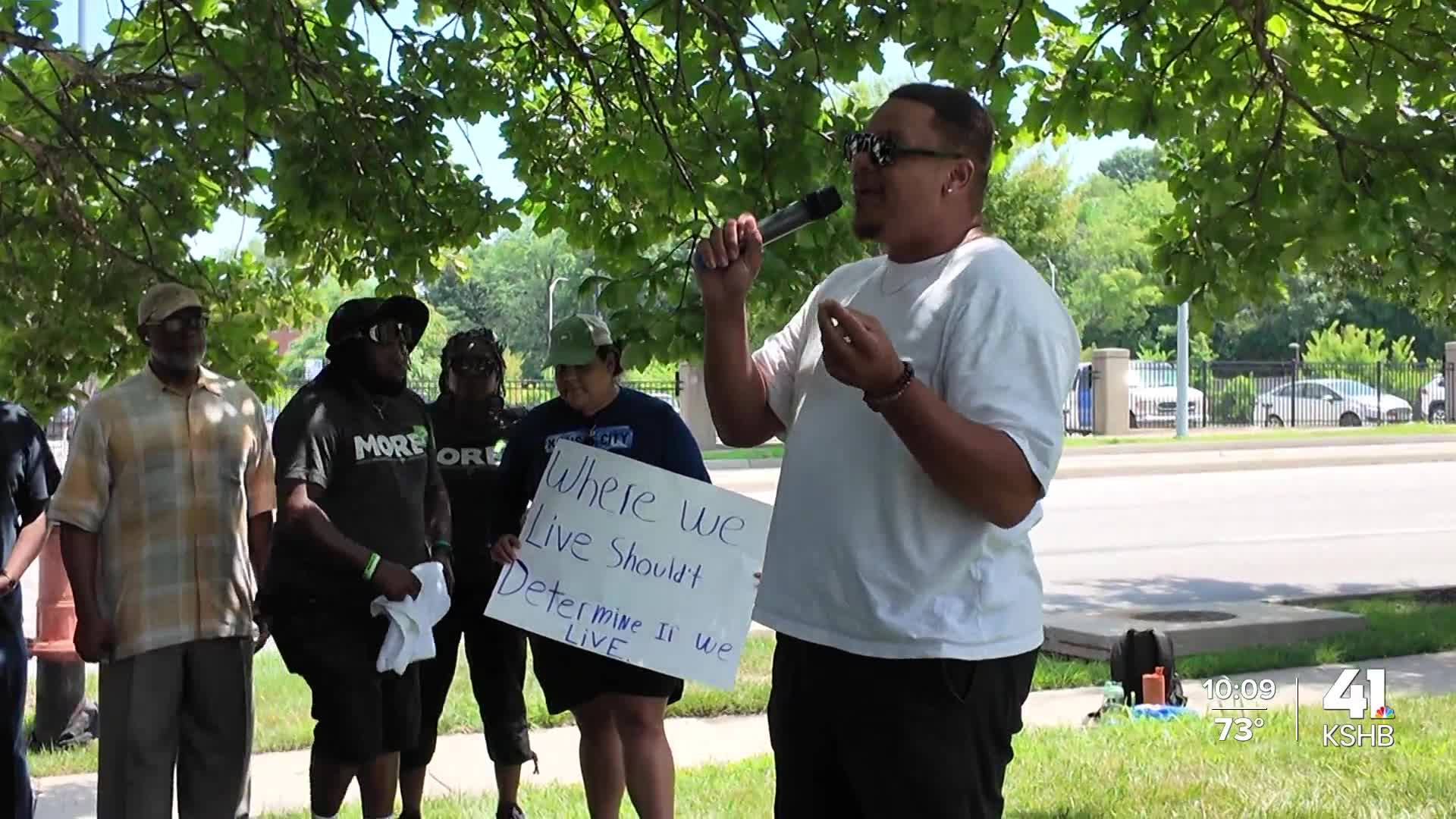KANSAS CITY, Mo. — Brush Creek provided the backdrop Thursday for a passionate march along East 47th Street in Kansas City, Missouri, drawing attention to the stark contrast in infrastructure between neighborhoods east of Troost Avenue and other parts of the city.
The event spotlighted longstanding inequalities in local development and investment.
Antoine Lee, who serves as Senior Pastor at Central Christian Church, voiced frustration over the lack of attention given to communities east of Troost.
"When people or city officials and developers are sitting around tables and dreaming up plans, why don't they ever think about me?" Lee asked.
The march began at Dr. Martin Luther King, Jr. Park and moved to the intersection of Brush Creek Boulevard and Troost Avenue.
Dozens of marchers advocated for greater investment and development in underserved areas.

"Why do I have to yell and scream that I want walkable sidewalks?" Lee asked. "Why do I have to yell and scream that I want the grass and the common areas taken care of and kept? Why do I have to yell and scream at city contractors to cover up manholes and to stop having low-hanging wires on our traffic poles? Why do I have to yell and scream to do that?"
Troost Avenue is the historic dividing line for racial economic disparities in Kansas City, Missouri.
According to Brent Never, a professor at the University of Missouri-Kansas City, living one block east of Troost Avenue correlates with an annual average household income $20,000 lower than that of households one block west.
Jackie Brown is the Chairperson of the Environmental Action Hub at More2, a local activist group that tackles racism, poverty, and inequality.

"It is no Black and white issue," Brown. "It is no rich and poor issue. It’s not us against them. It’s just ours. And until we wake up and realize that what you do to the least of us, you have done to me. You have done to all of us."
People who live east of Troost Avenue also experience blight, illegal dumping, and lower life expectancy. Organizers view this march as the first step in addressing decades-old concerns.
"What it looks like would be one city that flowed," Brown said. "Whether it's east, west, north, or south, we would have a beautiful city all over."
—
KSHB 41 reporter La’Nita Brooks covers stories providing solutions and offering discussions on topics of crime and violence. Share your story idea with La’Nita.




